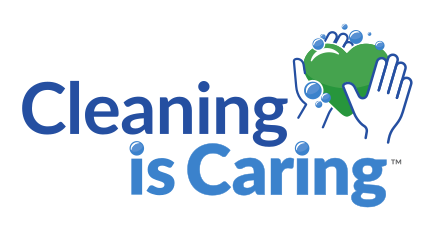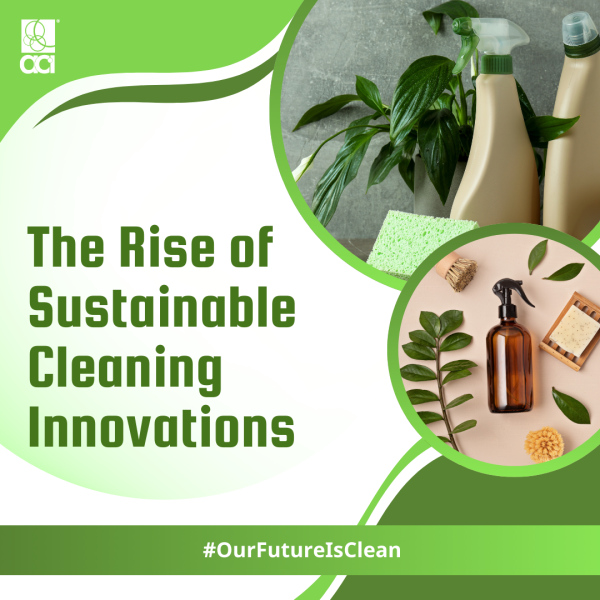As the awareness of environmental concerns grows, more people are looking for sustainable options in all aspects of their lives, including household cleaning products. The cleaning product industry has responded with a rise in innovations aimed at reducing the impact on the environment while maintaining the same level of cleaning efficiency.
Why Consumers Choose Sustainable Cleaning Products
When we asked sustainability-minded consumers how they felt about cleaning products, two-thirds felt good about the products they use at home. However, more than 40% of them were actively looking for products that were even safer for their health and the health of the planet. The good news is that finding these options is easier than ever with the latest innovations along the cleaning product supply chain. This means consumers can choose products that reflect their values and have more sustainable ingredients and less packaging.
Ingredients That Make Sustainability Possible
Knowing what’s in your cleaning products can help you make better choices for you and your family. Here are some key ingredients to look for:
Sustainable Raw or Recycled Materials
One option consumers have is to choose cleaning products that use sustainable raw or recycled materials in their ingredients, such as coconut oil, wood-based fibers, or sugar from corn or sugar cane. The use of these sustainable materials can reduce emissions, support regenerative farming practices, reduce negative impacts on ecosystems and improve traceability.
Enzymes
Enzymes are natural proteins that are highly effective at breaking down organic matter, such as grease, food stains, and odors. Enzyme-based cleaners are a popular choice in sustainable cleaning products because they target specific types of dirt without the need for harsh chemicals. These ingredients are also biodegradable and safe for septic systems, making them safe and environmentally friendly.
Biodegradable Polymers
Polymers are used in cleaning products to enhance texture and stability. Biodegradable polymers, derived from natural sources like starch or cellulose, break down more readily in the environment than synthetic polymers, reducing the long-term environmental impact of cleaning products.
Innovations Driving Sustainable Cleaning
The cleaning industry is evolving with new technologies and products that make cleaning more sustainable. Some exciting innovations include:
Concentrated Formulas
Concentrated cleaning products can help save on costs and take up less storage space. They also require less packaging and reduce the carbon footprint associated with shipping. Consumers can dilute the concentrated formula with water at home, leading to less waste and a more economical product. According to a study by the Oregon Department of Environmental Quality, concentrated products can reduce packaging waste by up to 70%.
Refillable and Reusable Containers
Many brands now offer refillable containers and bulk packaging options that allow consumers to spend less per refill while allowing them to reuse the same bottle multiple times. These offerings significantly decrease plastic waste, as single-use plastic bottles are one of the biggest contributors to environmental pollution. The Ellen MacArthur Foundation estimates that refillable systems can reduce plastic waste by up to 80% compared to conventional packaging.
Recyclable or Compostable Packaging
In addition to reducing the size and weight of packaging, companies are exploring a variety of packaging materials, such as biodegradable plastics, recycled paper, and compostable materials. These approaches help reduce the environmental impact of single-use packaging waste.
Waterless Cleaning Products
Some brands offer cleaning tablets or powders that activate when mixed with water, eliminating the need for heavy plastic bottles. By reducing the size and weight of cleaning products, companies can reduce fuel consumption and carbon emissions associated with transportation.
Green Manufacturing Processes
Like most sustainable companies, sustainable cleaning product companies often embrace eco-friendly manufacturing practices, such as utilizing renewable energy, reducing water usage, and minimizing waste production. These practices ensure that every stage of a product’s lifecycle, from creation to disposal, is as environmentally responsible as possible.
Third-Party Certifications
Look for labels like the EPA’s Safer Choice, Green Seal, or USDA BioPreferred, which indicate that a product meets strict environmental and safety standards.
Conclusion
Choosing sustainable cleaning products is an easy and impactful way to help the environment. By using cleaners with safer ingredients and supporting innovative products, consumers can make a difference. Even small changes can accumulate over time, and together, we can create a cleaner and more sustainable future.


TELL US WHAT YOU THINK (0)